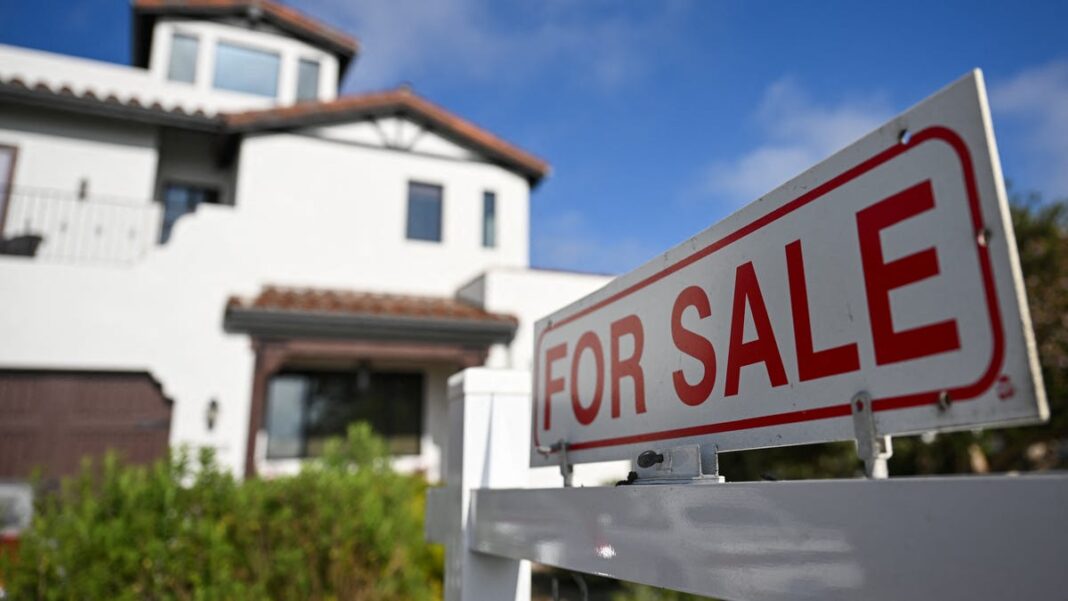Home Sales Reach 14-Year Low Due to Persistent High Prices
WASHINGTON, Oct 23 (Reuters) – Sales of existing homes in the U.S. fell to the lowest level in 14 years in September, impacted by rising mortgage rates and elevated home prices.
This marks the second consecutive month of decreasing home resales, reinforcing economists’ opinions that the downturn in residential investment, which includes home construction, has intensified in the third quarter. The housing sector has struggled to recover following a rise in mortgage rates during the spring.
While the supply of homes has increased, starter homes are still hard to find in many areas, keeping prices higher than most first-time buyers can afford.
“More rate cuts and options are needed to attract buyers again,” stated Jennifer Lee, a senior economist at BMO Capital Markets.
According to the National Association of Realtors, home sales dropped 1.0% last month, reaching a seasonally adjusted annual rate of 3.84 million units — the lowest since October 2010. Economists surveyed by Reuters had predicted that sales would remain flat at a rate of 3.86 million units.
These sales statistics likely reflect contracts that were signed a month or two earlier when mortgage rates were notably high.
Comparing year-on-year, home resales fell 3.5% in September. The South saw a 1.7% decrease in sales, with some of the drop attributed to impacts from Hurricane Helene in Florida. Sales in the state may continue to struggle after being hit by Hurricane Milton shortly after.
While sales decreased in the Northeast and Midwest, there was an increase in activity in the West.
After the Federal Reserve began reducing interest rates last month, mortgage rates initially fell, but they have risen over the past three weeks due to strong economic data, prompting traders to dismiss expectations of another 50-basis-point rate cut next month.
The average rate on a 30-year fixed mortgage was 6.44% last week, slightly higher than the 6.08% average at the end of September but significantly lower than the 7.63% a year ago, according to data from Freddie Mac, a mortgage finance agency.
Indicators suggest potential homebuyers are holding back in hopes of lower borrowing costs, as shown by a slight uptick in single-family building permits in September.
On Wall Street, stock prices fell, the dollar strengthened against other currencies, and U.S. Treasury prices declined, with the yield on the 10-year note reaching its highest point in three months.
Improvement in Supply
The NAR suggested that the upcoming U.S. presidential election on November 5 might make potential buyers hesitant to make decisions, although there is currently no definite evidence linking the election to buying activity.
Residential investment negatively impacted gross domestic product in the second quarter, while growth projections for the third quarter indicate a growth rate of up to 3.4%. The previous quarter saw a GDP growth of 3.0% in the April-June period.
“Recent increases in mortgage rates indicate that a broad recovery in the housing market may take longer than anticipated,” advised Christopher Rupkey, chief economist at FWDBONDS.
Housing inventory rose by 1.5% to 1.39 million units last month, the highest level since October 2020, marking a 23.0% increase from one year ago. However, this supply still falls short of the 1.8 million units available before the COVID-19 pandemic.
Despite the improving inventory, the median price for existing homes climbed 3.0% year-on-year to $404,500 in September, the highest recorded for that month. Prices increased in all four regions, and about 20% of homes sold for more than their listing price.
At the current sales rate in September, it would take 4.3 months to deplete the existing home inventory, the longest duration since May 2020 and an increase from 3.4 months a year prior. A balanced market typically has a supply of four to seven months.
Homes generally remained on the market for 28 days in September, compared to 21 days the prior year. First-time buyers made up 26% of sales, slightly down from 27% the previous year.
This percentage still falls below the 40% that experts believe is necessary for a robust housing market.
All-cash transactions constituted 30% of sales, up from 29% a year earlier, while distressed sales, including foreclosures, remained at 2% of total transactions, unchanged from the last year.

